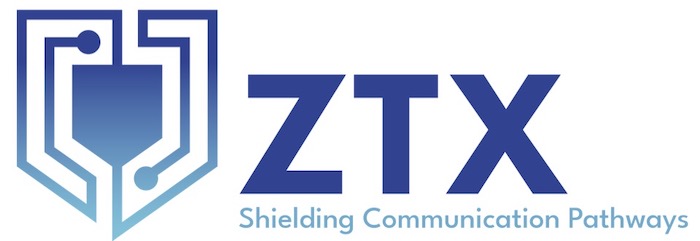Project will harden 5G wireless communication networks for military use with $5 million from NSF

LAWRENCE — A new push to strengthen security of 5G wireless communications networks for use by the U.S. armed forces will be centered at the University of Kansas.
The National Science Foundation (NSF) has awarded a $5 million, Phase 2 Convergence Accelerator Track G grant to a research and development team based at KU. The project is led by principal investigator Taejoon Kim, KU associate professor of electrical engineering & computer science, under the aim of giving U.S. military personnel a secure way to share situational awareness via the same high-performance consumer 5G networks that cover the nation.
Today, however, these networks are vulnerable to adversaries and distrusted by the U.S. military, in part because they weren’t designed for many adversarial settings and electronic warfare scenarios common in military hardened networks. Additionally, much of the hardware behind 5G is manufactured overseas.
“5G’s significance is recognized by everyone,” Kim said. “It’s pivotal in rapid dissemination of information across the globe. It serves as the fundamental backbone for virtually every business operation. One of the primary forces enabling new applications is the synergy between research, standardization in 3GPP and equipment manufacturing. New research leads to intellectual property, which is then incorporated into future standards, and then new base station and user equipment products. Nevertheless, over the past decade or so, U.S. leadership in the wireless industry has encountered some setbacks. There is no longer a major U.S.-headquartered base-station manufacturer. Under 3GPP standards, essential intellectual property is dominated by vendors and countries directly competing with the U.S.”

To enable secure military use of foreign-made 5G infrastructure, Kim will lead a team dubbed “Zero Trust X (ZTX)” to perform fundamental research to develop an end-to-end security solution for reliable 5G use.
“Traditionally, security is implied within network boundaries, similar to traditional boundary-based security models,” Kim said. “Once you cross this boundary, the assumption is that you're secure — this concept follows a trusted paradigm, with users providing credentials. ‘Zero Trust,’ however, differs significantly because even after access is granted, trust remains minimal. Every operation is continuously monitored for potential threats. For instance, when connecting to a network, constant threat detection and mitigation is in place, responding to detected threats promptly, ensuring comprehensive security down to the millisecond.”
The Zero Trust solution conceived by the ZTX team has two main parts: the Zero Trust software, which offers end-to-end security, and a communication infrastructure.
“The communication infrastructure comprises various components and pathways, such as a wireless network connecting a soldier to a base station in a foreign country, followed by routing through a core network and, finally, transmission to a command center, perhaps located in Washington, D.C.,” Kim said.
To safeguard this network, the KU researcher said the ZTX team would consider a 5G network infrastructure, such as the consumer network that spans the U.S., as a “black box.”
“We aim to add an additional layer of security to any data sent by user equipment through the 5G network,” he said. “This extra layer could include duty-specific encryption, near-real-time threat detection and protection against location-based attacks. In a hostile environment, adversaries can exploit location information that are now available in any 5G network for harmful purposes. To address this, we seek to obfuscate device locations using advanced spatial coding techniques.”
Another critical aspect is making data traffic appear mundane to potential adversaries, Kim said.
“By disguising duty traffic as ordinary 5G traffic, we reduce the likelihood of suspicion,” he said. “The goal is to prevent adversaries from recognizing any suspicious packets or patterns in the data. Our approach is rooted in maintaining security without raising suspicions.”
The ZTX investigators said their work will result in a suite of software called a “Zero Trust Chain” that won’t require modifications to public 5G/O-RAN networks. The final step will be to carry out testing in a laboratory-scale integrated 5G/O-RAN testbed and on other available testbeds, with the intent of bringing the software to market.
Because the product will be useful for private-sector entities using 5G as well, the ZTX software family will be commercialized by a startup associated with the collaboration, also to be called ZTX. Currently, the startup is considering space at KU Innovation Park, Kim said. The startup company is meant to sustain the research efforts beyond the life of the Phase 2 grant.
The collaboration and the new company will also create training opportunities for KU students as well as new jobs in Lawrence and other communities. Project manager David Tamez, communication specialist at Institute for Information Science (I2S) of KU, will play a key role in overseeing these projects, Kim said.
“We regularly bring students, including postgraduate students, into our team, along with web developers and engineers,” Kim said. “Our engineering team is diverse, including professionals with industry experience and those with academic backgrounds. We’re collaborate closely with this team to execute project goals effectively.”
The ZTX team will involve researchers at Sang Kim with Iowa State University; Vuk Marojevic with Mississippi State University; Syed Rafiul Hussain with Pennsylvania State University; David Love, Sonia Fahmy and Chris Brinton with Purdue University; Remi Chou with University of Texas at Arlington; and Hyuck Kwon with Wichita State University. These institutions will be joined by personnel from defense contractor Chris Vander Valk with Raytheon and Khanh Pham with the Air Force Research Laboratory.
Top image: iStock.